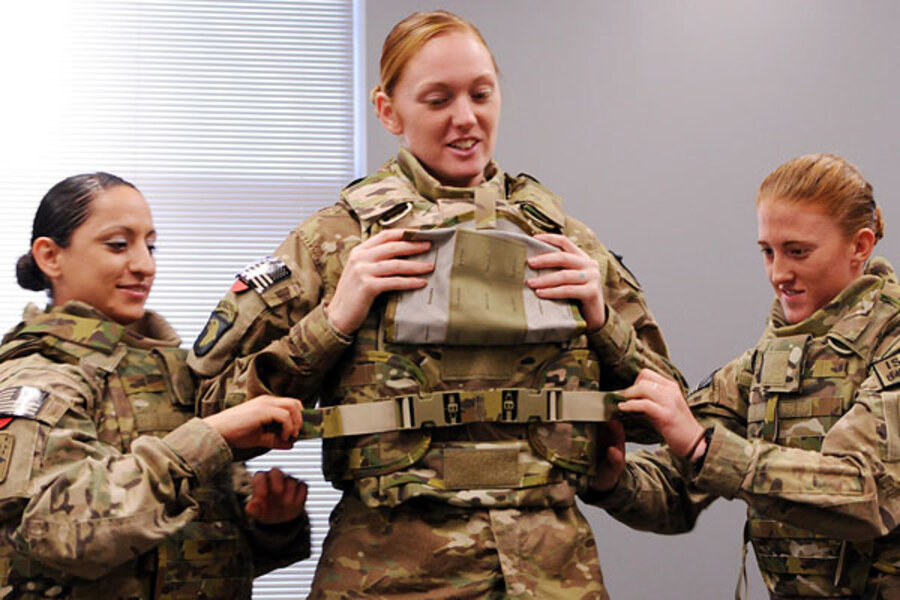Women could serve in combat in Afghanistan
Loading...
| Washington
As the nation’s top defense officials signed a memo Thursday lifting the ban on women in combat, more details have begun to emerge about the Pentagon’s plan to officially put female troops on the front lines – from how quickly it could happen to what the physical requirements might be.
On Thursday, some of the answers became clearer.
Could women officially be serving in the infantry, for example, before the war in Afghanistan ends? The answer is a measured, "yes."
“I don’t think we can exclude this possibility,” says a senior Defense official who could only speak to the media on condition of anonymity.
At a press conference Thursday, Defense Secretary Leon Panetta offered his rationale for opening combat roles to women. “Women have shown great courage and sacrifice on and off the battlefield, contributed in unprecedented ways to the military’s mission, and proven their ability to serve in an expanding number of roles,” he said.
“Our nation was built on the premise of the citizen soldier. In our democracy, I believe it is the responsibility of every citizen to protect the nation,” he added. “And every citizen who can meet the qualifications for service should have that opportunity.”
During the past decade of war, more than 280,000 women have deployed in support of operations in Iraq and Afghanistan, and 152 women have died. But the process of getting women into the roughly 237,000 jobs that have previously been closed to them will be a gradual progression, officials say.
In the months to come, there will be some hard and fast deadlines that the services must meet.
The first will be a report to the secretary of Defense, due by mid-May, that will explain how the services plan to implement the lifting of the ban on women in combat.
They will then be expected to “move ahead expeditiously,” says a Pentagon official, who also could speak only on condition of anonymity.
By January 2016, the services must give the Pentagon leadership notice if they believe that there are particular fields into which women should not be integrated. These might include Special Operations Force fields like the Navy SEALs.
Yet the expectation is that the services will develop a plan to include women in specialties that range from infantry to artillery, known in military parlance as the combat arms professions.
“We would expect that the services would provide a combination of ‘This is what we think we can do sooner,’ and ‘This is how we intend to execute,’ ” says the Pentagon official.
The issue of physical requirements is one with which the services continue to grapple. Though senior military officials acknowledge that they might, in some cases, have to develop gender-neutral standards, they stress that standards will not fall.
Mr. Panetta acknowledged that not all women will meet the standards required to serve in some of the military’s most physically demanding jobs.
“In life, there are no guarantees of success. Not everyone is going to be a combat soldier,” he cautioned. “But everyone is entitled to the chance.”





